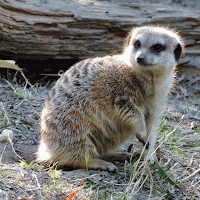Another great discovery in Burlingame was Washington Park,
bordered by Carolan Avenue, Burlingame Avenue, and the Burlingame High School. Washington
Park is the former site of the Moses Gunst estate, and home to about 80 species
of trees.
 |
| Eucalyptus viminalis – Manna Gum Eucalyptus (#34 on the Trees of Washington Park map) |
The trees are from all over the world, making the park a
mini botanical garden, tucked in among the play grounds, recreational
buildings, and baseball fields. I spent a couple of my free Saturday hours,
wandering the paths and marveling at the beautiful trees.
 |
| Melaleuca stypheliodes – Black Tea Tree (#36A) |
The Burlingame Trees website provides a map of Washington Park, with a key for all of its trees. Using the map and key, I was able to identify
many of the trees (some were familiar from the Tree ID class I took at Merritt
College in 2012).
 |
| Ginkgo biloba – Maidenhair Tree (#37) |
The park is a great resource for viewing trees as they go
through their seasonal cycles, and as they grow to maturity. The trees have the
room they need to spread and grow, which makes them beautiful specimens. Before
planting a tree in your yard, I recommend visiting Washington Park in
Burlingame to see how it will look in the future.
 |
| Metasequoia glyptostroiboides – Dawn Redwood (#49) |
Washington Park is also just
a great place to visit – an oasis of trees, set in the City of Trees. In the winter, it is quiet and tranquil; in the spring, it must be breathtaking with its flowering trees (Malus, Prunus, and Pyrus species).
 |
| Sequoiadendron giganteum – Giant Sequoia (#76) |























